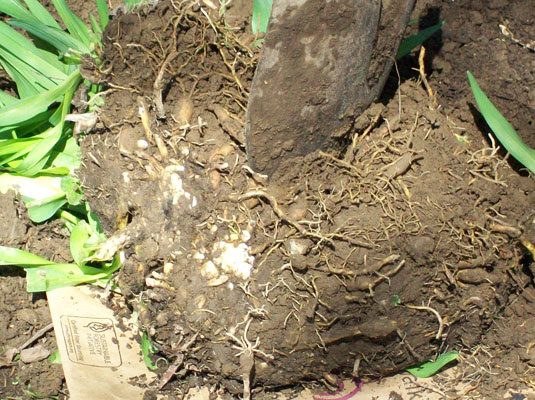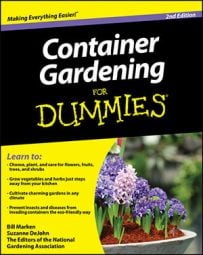Divide and repot perennials to alleviate crowded roots. Because perennials tend to grow larger — in some cases much larger — than annuals, you may find your plants outgrowing their pots. (A sure sign is roots that fill all available soil space or bulge out at the top. An even surer sign: roots bursting the sides of the container.)
At times like these, you need to make some choices. You can repot them into larger containers, you can root-prune them and replant them in the same container, or you can divide them.
Some perennials, like coral bells and hostas, spread by underground roots. In pots, they can eventually grow so crowded that they no longer look good or grow well. When your plants enlarge to this size, think about dividing the clump. The ideal time to divide a plant depends on the type of plant and your locale. In general, in regions with mild to moderate winters you can divide plants in early spring or fall. In regions with very cold winters, most plants are best divided in early spring. In regions with very hot summers, divide plants in fall. Exceptions to these guidelines exist, so if you’re unsure, do some research before digging in.
To divide a perennial:
Ease the plant from the pot.
Wash off as much soil as possible — you need to be able to see the roots.
Using a trowel, garden knife, or whatever tool seems to work for you, gently tease apart the root mass into two or more clumps.

These clumps are called divisions. Be sure that each division has a healthy set of roots to support it.
Repot each clump into a new pot using the bare-root potting procedure. You can also plant some or all the clumps in the ground if you have the space and the right conditions. Or, share or swap divisions with your friends and neighbors.
The roots of some plants are such a tangled mass that it’s impossible to tease them apart. In these cases, use a sharp knife or, for large plants, a sharpened spade to slice the plant in half, from top to bottom, so that the two remaining sections contain both top growth (or where the top growth was if the plant is dormant) and roots. Replant as you would a regular potted plant.

